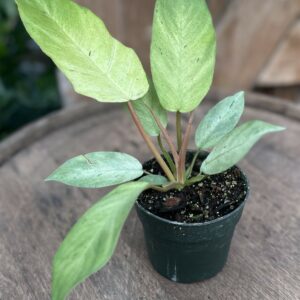Bottle Palm (For Sale)
$199.99 – $399.99Bottle Palm Care
Sunlight: Plant the Bottle Palm in a location where it receives bright, indirect sunlight to partial shade. While it can tolerate some direct sunlight, especially in the morning or late afternoon, avoid prolonged exposure to intense sunlight, which can scorch the leaves.
Soil: Ensure the soil is well-draining and rich in organic matter. Bottle Palms prefer slightly acidic to neutral soil conditions. Amending heavy clay soils with sand or perlite can improve drainage.
Watering: Water the Bottle Palm regularly, especially during the growing season (spring and summer). Allow the top few inches of soil to dry out between waterings, but avoid letting the soil become completely dry. Reduce watering frequency in winter, but ensure the plant does not suffer from drought stress.
Fertilization: Apply a balanced, slow-release fertilizer specifically formulated for palm trees in spring and summer. Follow the manufacturer’s instructions for dosage and frequency. Avoid fertilizing during the winter months when growth is minimal.
Pruning: Minimal pruning is typically required for Bottle Palms. Remove any dead or damaged fronds as needed, but avoid pruning green fronds, as this can harm the tree. Trim off any spent flowers or fruit clusters to promote new growth.
Protection: Protect the Bottle Palm from cold temperatures, especially if grown in cooler climates. Provide frost protection by covering the palm with blankets or frost cloth during cold snaps. Additionally, protect the palm from strong winds, which can damage its fronds.
Pest and Disease Control: Monitor the Bottle Palm for common pests such as spider mites, aphids, and scale insects. Treat infestations promptly with insecticidal soap or neem oil. Ensure good air circulation around the palm to prevent fungal diseases. Avoid overwatering, which can lead to root rot.
Container Care: If grown in containers, ensure the pot has drainage holes to prevent waterlogging. Repot the palm every 2-3 years into a slightly larger container with fresh, well-draining potting mix. Provide adequate water and fertilizer to container-grown palms, as they have limited access to nutrients compared to those planted in the ground.






